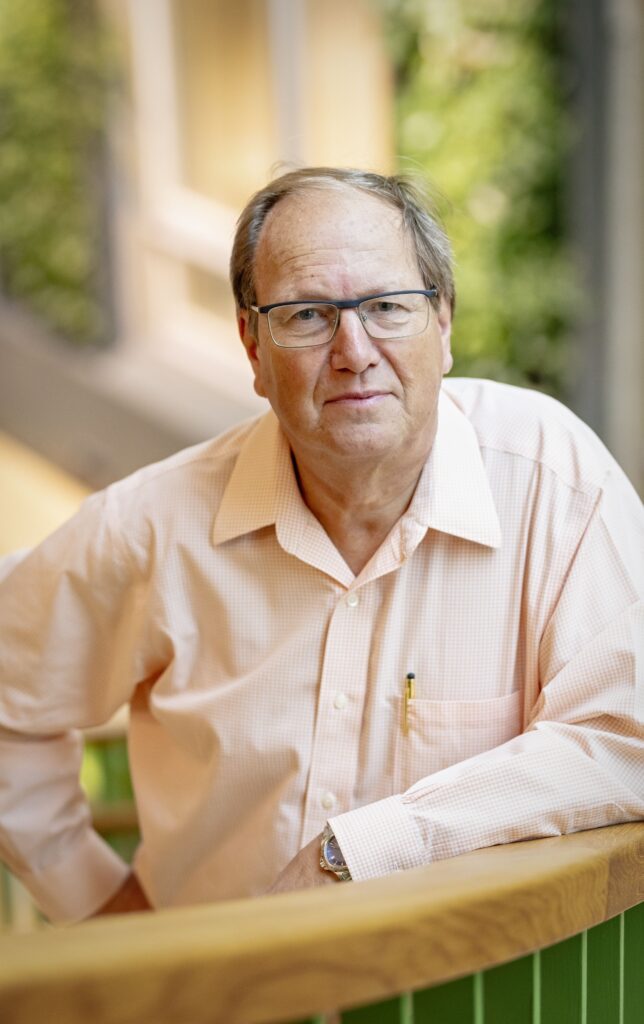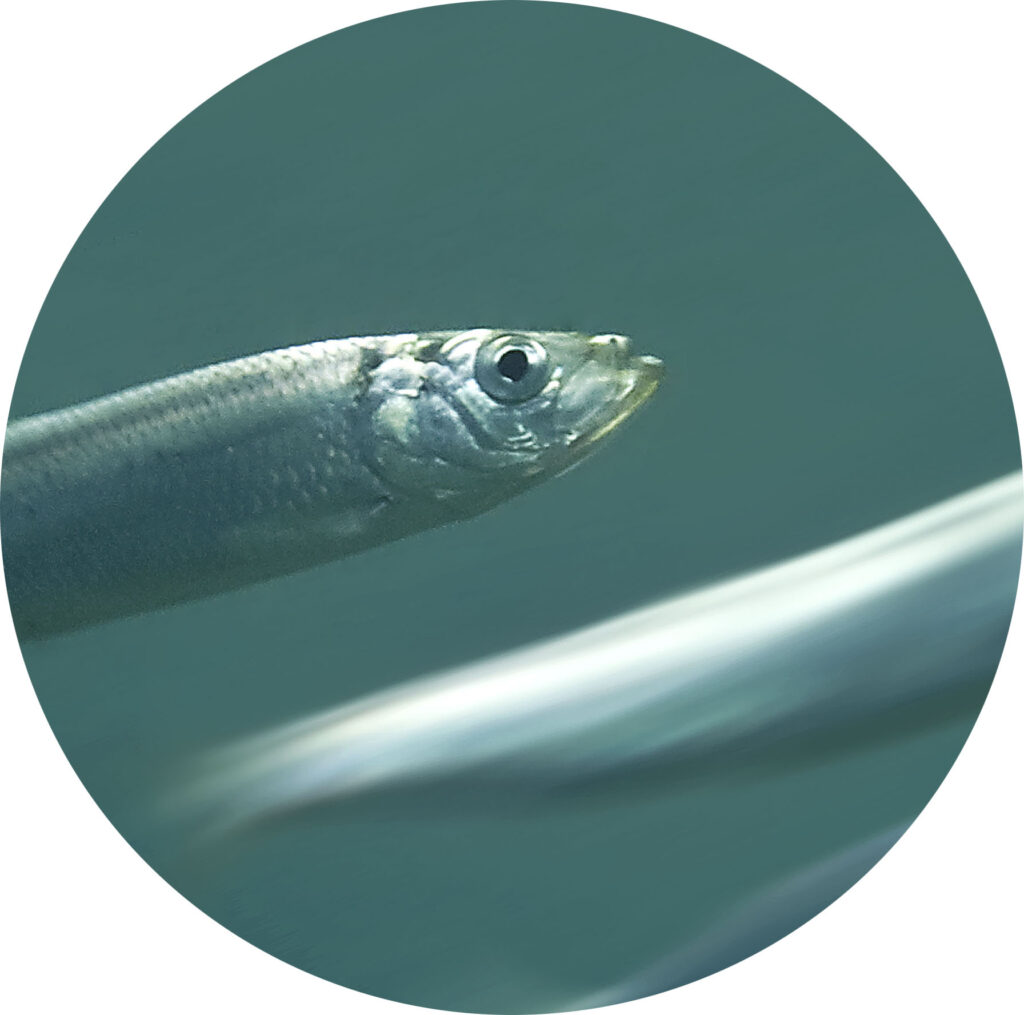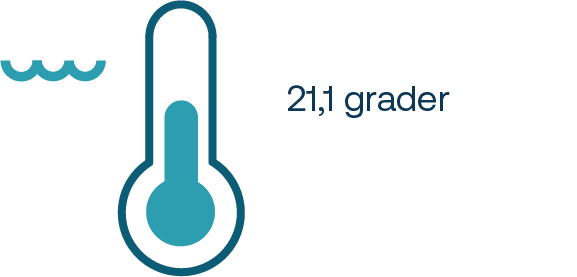The climate crisis is accelerating the warming of our oceans and poses a major threat to marine animals and fish that have to adapt quickly to changing environmental conditions. Genetic modification of fish has been used in fish farming in the past, but is it possible to use genetic engineering to protect and support wild species? BalticWaters has delved into the research on the adaptability of Baltic Sea fish to a changing climate and what role genetic engineering can play in this process.
So far, the debate on GMO fish has centred on species with commercial benefits, mainly in terms of farming. As early as 1989, the first genetically modified salmon, called AquAdvantage, was created, a variant of Atlantic salmon that grows twice as fast as its ‘natural’ counterparts. It was authorised for human consumption in 2015 and in 2017 became the first GMO fish sold as food. The GMO fish, or ‘Frankenfish’ as it is called by critics, looks like a typical salmon, but has a growth hormone gene taken from king salmon. This may not sound like a big deal, but scientists are concerned about the long-term consequences of human experimentation with genetics.
‘There is a risk that the transgenic fish will spread in the wild and it is important that cultivation takes place under controlled conditions so that naturally occurring species are not wiped out,’ write researchers Fredrik Sundström and Jörgen Johnsson in a report for Formas.
More about AquAdvantagelax
AquAdvantagelax has been supplied with DNA from two other species: the promoter sequence comes from the species Zoarces americanus, which is related to the Swedish Zoarces viviparus, seaweed spawn/eel cucumber. The protein-coding part of the added DNA comes from Oncorhynchus tshawytscha, king salmon, and codes for king salmon growth hormone.
Source: Havs- och vattenmyndighetens rapport 2017:36
What is genetic modification?
The legal definition of a genetically modified organism (GMO) is an organism in which the genetic material has been altered in a way that does not occur naturally by mating or natural recombination. The purpose of altering the genetic material of an organism is to bring about changes in the characteristics of the organism in a way that is favourable to humans.
Source: Havs- och vattenmyndighetens rapport 2017:36
Genetic research on Baltic herring
As the climate crisis has worsened, the question of whether genetic modification or knowledge about species’ genetic adaptation can be used to protect or help species in the wild has gained ground. Here, the herring has emerged as an interesting research subject.
– Herring have an extensive toolbox of gene variants that can be used for adaptation. It is conceivable that knowledge from herring could be used to manipulate the genomes of other wild species to cope with rapid environmental changes, says Leif Andersson, professor of functional genomics at Uppsala University.

Leif Andersson. Photo: Mikael Wallerstedt
Leif’s interest in herring genetics goes back a long way – long before climate change became a hot topic. It started when Leif studied biology in the 1970s and took advanced courses in genetics and ecology. At the same time, new DNA technology was emerging to study proteins.
– If they had a difference in charge, it was due to a genetic difference and then you could find what we call genetic markers.
This sparked an idea in Leif.
– In the ecology course we had learnt about all these stocks of herring, but no one knew how closely related the different stocks were. Then I thought that we could take this new technique and apply it to herring, says Leif.
This then became the focus of his thesis work. Leif took samples from several herring stocks and studied the data. But the results were not as interesting as he had hoped.
– We found 13 markers, but the frequency of gene variants was identical among all samples. I then concluded that we were not getting anywhere with these methods.
He was so disappointed that he turned down a PhD position to continue his research
– But the findings on the herring were gnawing at my brain all these years, Leif says.
New technology makes it possible to map the genetic characteristics of herring
In 2001, the breakthrough in mapping the human genome came, and in the late 2000s, new technologies were established that made it possible to sequence an entire genome at a relatively low cost. This opened up the possibility of doing high-resolution genetic studies on any species.
Leif contacted his old supervisor at Stockholm University to see if the samples from his herring study were still available – and they were. After a first preliminary analysis, they went from 13 genetic markers to about 400 000.
– The picture changed completely, Leif says.

Photo: Tobias Dahlin
Since then, he has continued to map the entire herring genome in the Atlantic and Baltic Seas and found that there are as many as 15 million genetic variants in herring stocks.
Herring is one of the most abundant vertebrates in the world. An estimate was made a few years ago that there were about 1 000 billion herring.

15 million gene variants – that is how many there are in the world’s herring stocks. Source: Han, F et al. 2020. Ecological adaptation in Atlantic herring is associated with large shifts in allele frequencies at hundreds of loci. eLife
Herring exist in varying conditions around the world, which makes them highly interesting for studying genetic adaptation, or epigenetics, which refers to how different genes are expressed.
– Much of the adaptation that occurs is based on gene variants that have been under selection for a long time, says Leif.
But some adaptations have happened relatively quickly, such as the Baltic herring’s ability to see better in red-shifting light – the light that is typical of Baltic Sea waters.
– There has been a mutation in a gene that determines one of the eye’s light receptors, which makes them absorb more of the red than the blue spectrum. It happened quite quickly, perhaps in about fifty generations. Sometimes mutations can happen quickly, especially when a species colonises a new environment.
But how quickly could herring adapt to warmer waters? Relatively quickly, believes Leif Andersson.
I think herring are well placed to adapt, but it’s important to remember that how herring will fare depends on what happens in the rest of the ecosystem, he says.
Changing behaviour of fish as sea temperatures rise
There are already herring stocks adapted to warmer waters and we are likely to see a shift in stocks as temperatures rise. 2023 was the warmest year on record since 1850, while the concentration of carbon dioxide in the atmosphere reached record levels. Last year also saw record global sea temperatures as our waters absorb much of the global warming. Studies show that, as a result, marine animals and fish are moving away from the equator by an average of 17 kilometres per decade. Many fish are also drifting deeper into the waters in search of cooler temperatures.

1,48 degrees – That’s how much warmer the year 2023 was than average compared to the pre-industrial level of 1850-1900.
Source: SMHI

21,1 degrees – This is how warm our oceans were in April 2022, which is the highest average temperature recorded.
Source: Dagens Nyheter
In the face of the accelerating climate crisis, research on how species deal with heat has intensified. A current project of significance for the Baltic Sea and cod is being conducted by Diana Perry and colleagues. They are simulating climate change according to different SMHI projections to test how cod, among others, react to climate stress. Like herring, cod is a keystone species in marine ecosystems and simulation tests are now being conducted on Atlantic cod.
– Cod have historically been very adaptable, but research shows that adults are very sensitive to high temperatures. How they respond to climate change is important information for fisheries and ecosystem management,’ says Diana Perry, Environmental Analyst, Department of Aquatic Resources at SLU.
Cod, like herring, has some ability to adapt to new environmental conditions. At the same time, it is a longer-lived species, which has its drawbacks.

Diana Perry. Photo: Privat
– It usually takes centuries and several generations for a species to adapt and cod live a long time. But because cod mature faster in the Baltic Sea, compared to other seas, the stock could in theory adapt faster, says Diana.
One reason why cod mature earlier is because of heavy fishing pressure, which shows how adaptable fish can be.
– Cod are both highly intelligent and resilient, says Diana.
The herring – a potential keystone species for future genetic adaptation of wild fish species
Changes in gene expression depend very much on the speed of change. Studies show that some species can adapt to gradual warming and pass on the genetic markers to future generations if both parent and fry experience the same environmental changes. However, if the stress happens too quickly, most fish don’t stand a chance.
Leif Andersson wants to conduct similar simulation experiments with herring in BalticWater’s new fish research laboratory. He also believes that herring’s diversity of genetic traits can benefit other species – such as cod.
– Cod cannot spawn in large parts of the Baltic Sea, except in the southern Baltic, as sperm are not activated in low salinity – but herring are. There are methods for adding such a gene from herring to the cod genome, and this would mean a cod that can spawn in the entire Baltic Sea, says Leif.
So far, there is no genetic manipulation of wild fish species, but it may become a relevant issue in the future.
– Genetic studies like this open up the possibilities, and then the next question is whether we want to do it, says Leif.
But according to both Leif Andersson and Diana Perry, it is important to gather as much knowledge as possible about the genetics and adaptability of our most important fish species – and to protect them.
It’s important to preserve certain populations that have genetic variants that could be useful in the future, says Leif, who compares it to having a well-stocked toolbox of genetic variants.

About BalticWaters Fish Laboratory
To create the conditions for new research on Baltic Sea fish, support release of endangered fish species, development of aquaculture and knowledge building, BalticWaters is establishing a new fish research laboratory – the first of its kind in the Baltic Sea region.
At the lab, future research will be able to see if it is possible to ‘speed up’ natural adaptation processes – partly by breeding fish with special conditions, but also looking at the possibilities of genetic adaptations.
– Accelerating evolution has been done in many species and crops that we enjoy today. At the same time, great care is needed to avoid doing more harm than good. It remains to be seen whether we can help herring and cod cope with the changes facing the sea, says Konrad Stralka, CEO of BalticWaters.
Construction of the laboratory began in 2024 and it is expected to be ready for operation in autumn 2025. In total, BalticWaters is investing SEK 170 million. Axfood has become a long-term partner by contributing to the operation of the fish research laboratory, advice, contacts and knowledge.
Read more about the laboratory here.

